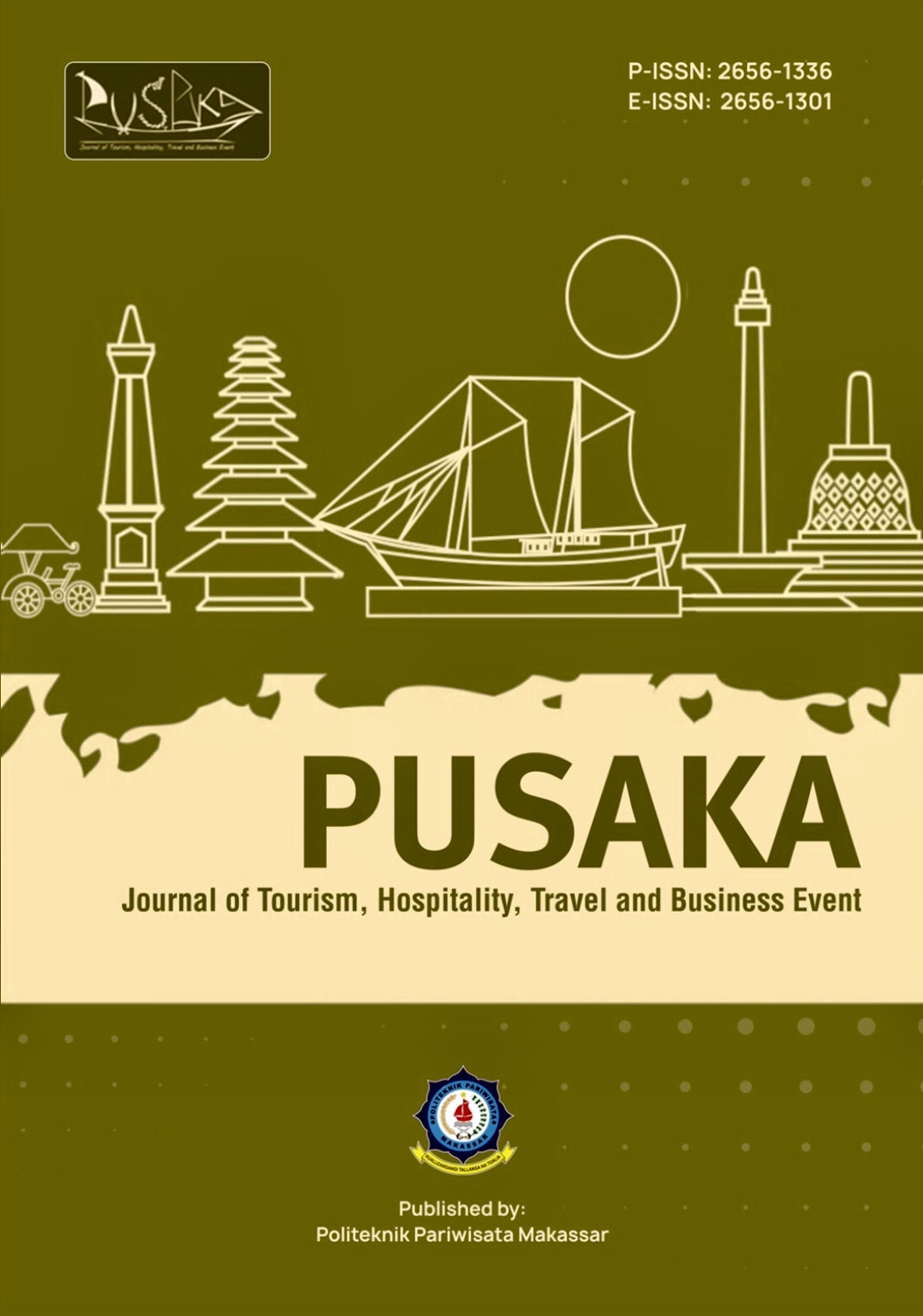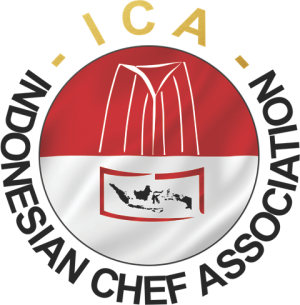Sustainable Tourism Management in Sekotong: Potentials and Challenges
DOI:
https://doi.org/10.33649/pusaka.v5i2.258Keywords:
Sekotong, Sustainable tourism, Marine tourism, Strategy, ManagementAbstract
Sustainable tourism management is a crucial aspect that needs attention to improve the quality of destinations. Sekotong, an area in West Lombok regency, has a lot of potential that can be developed to support sustainable tourism, while studies on identifying the potential and implementing sustainable tourism in this area are still limited. This study aims to identify tourism potential in Sekotong as a tourism product and evaluate the implementation of sustainable tourism management in each destination of Sekotong. Data collection was carried out through the observation of four representative destinations, namely Mangrove Sekotong Tengah and Elak-Elak Beach representing marine tourism, Mareje Village for rural tourism, and 3 Gilis (Naggu, Tangkong, Sudak) representing island tourism. The research was conducted by observing the potencies of these destinations and then reviewing the implementation of the concept of sustainability. To obtain more information, researchers interviewed managers or tourism operators at each destination. The observation and interview referred to 4 pillars of the GSTC sustainable tourism standards. The results showed that there is a potential for cultural tourism products in Mareje village, marine and underwater tourism activities in 3 Gilis and Elak-Elak beach, as well as marine-based educational tours in Mangrove Sekotong Selatan. Referring to the 4 pillars in sustainable tourism, however, the management and provision of facilities need to be standardized and improved. In addition, several important strategies need to be implemented in improving the quality of these destinations such as synchronization among stakeholders and training in implementing destination management by considering all sustainable tourism concepts in accordance with the 4 pillars in the GSTC criteria.
References
Asmoro, A. Y., Bachri, T. B., & Yusrizal, F. (2021). Studi Evaluasi Formatif Pengelolaan Ekowisata ‘Burung Indonesia’di Mbeliling, Flores. JURNAL DESTINASI PARIWISATA, 9(1), 1-13. doi:https://doi.org/10.24843/jdepar.2021.v09.i01.p0 1
Astiti, L. S., & Sugianti, T. (2014). Dampak penambangan emas tradisional pada lingkungan dan pakan ternak di Pulau Lombok. Sains Peternakan: Jurnal Penelitian Ilmu Peternakan, 12(2), 101-106. doi:https://doi.org/10.20961/sainspet.v12i2.4786
Badan Pusat Statistik Kabupaten Lombok Barat. (2021). Kecamatan Sekotong dalam Angka Retrieved from Lombok Barat https://lombokbaratkab.bps.go.id/publication/2021/0 9/24/67396ace630593c9c0edaf3b/kecamatansekotong-dalam-angka-2021.html
Borland, H., & Lindgreen, A. (2013). Sustainability, epistemology, ecocentric business, and marketing strategy: Ideology, reality, and vision. Journal of Business Ethics, 117(1), 173-187. doi:https://doi.org/10.1007/s10551-012-1519-8
Diskominfo Kabupaten Lombok Barat. (2022). Sekotong, Wisata Bahari Menggoda di Lombok Barat [Press release]. Retrieved from https://lombokbaratkab.go.id/sekotong-wisatabahari-menggoda-di-lombok-barat/
Feyers, S., Stein, T., & Klizentyte, K. (2019). Bridging worlds: Utilizing a multi-stakeholder framework to create extension–tourism partnerships. Sustainability, 12(1), 80. doi:https://doi.org/10.3390/su12010080
Habaora, F., Riwukore, J. R., & Yustini, T. (2021). Kondisi Eksisting Destinasi Pariwisata Pantai Lasiana Kota Kupang Berdasarkan Atraksi, Aksesibilitas, Fasilitas, Kelembagaan, dan Ekosistem Pariwisata. Jurnal Kepariwisataan Indonesia: Jurnal Penelitian dan Pengembangan Kepariwisataan Indonesia, 15(2), 103-115. doi:https://doi.org/10.47608/jki.v15i22021.103-115
Hall, C. M. (2008). Tourism and climate change: Knowledge gaps and issues. Tourism Recreation Research, 33(3), 339-350. doi:https://doi.org/10.1080/02508281.2008.1108155 7
Junaid, I. (2014). Perencanaan Strategis Pariwisata Budaya: Mekanisme Menuju Pariwisata Berkelanjutan. Jurnal Ilmiah Pariwisata, 19(1), 13- 26. Retrieved from https://jurnalpariwisata.stptrisakti.ac.id/index.php/JI P/article/view/20
Junaid, I. (2019). Pariwisata bahari: Konsep dan studi kasus. In: Politeknik Pariwisata Makassar.
Junaid, I., Dewi, W. O., Said, A., & Hanafi, H. (2022). Pengembangan Desa Wisata Berkelanjutan: Studi Kasus di Desa Paccekke, Kabupaten Barru, Indonesia. Journal of Regional and Rural Development Planning (Jurnal Perencanaan Pembangunan Wilayah dan Perdesaan), 6(3), 287- 301. doi:https://doi.org/10.29244/jp2wd.2022.6.3.287- 301
Kuryanti, S. J., & Indriani, N. (2018). Pembuatan Website Sebagai Sarana Promosi Pariwisata:(Studi Kasus: Pantai Jatimalang, Purworejo). Sinkron: jurnal dan penelitian teknik informatika, 2(2), 37- 46. Retrieved from https://polgan.ac.id/jurnal/index.php/sinkron/article/ view/116
Martínez, J. M. G., Martín, J. M. M., Fernández, J. A. S., & Mogorrón-Guerrero, H. (2019). An analysis of the stability of rural tourism as a desired condition for sustainable tourism. Journal of business research, 100, 165-174. doi:https://doi.org/10.1016/j.jbusres.2019.03.033
Miles, M. B., Huberman, A. M., & Saldaña, J. (2018). Qualitative data analysis: A methods sourcebook: Sage publications.
Moro, H., Kasiamdari, R., & Sancayaningsih, R. (2011). Keanekaragaman jenis tumbuhan penyusun vegetasi lantai sekitar quarry di kawasan tambang emas tradisional, Sekotong, Lombok Barat. Retrieved from http://etd.repository.ugm.ac.id/penelitian/detail/530 69
Nurul, W. (2020). Pemberdayaan Masyarakat dalam Pengembangan Desa Wisata di Desa Gili Gede Indah Kecamatan Sekotong Kabupaten Lombok Barat. Universitas_Muhammadiyah_Mataram, Retrieved from https://repository.ummat.ac.id/1316/1/Cover%20- %20BAB%20III.pdf
Pan, S.-Y., Gao, M., Kim, H., Shah, K. J., Pei, S.-L., & Chiang, P.-C. (2018). Advances and challenges in sustainable tourism toward a green economy. Science of the total environment, 635, 452-469. doi:https://doi.org/10.1016/j.scitotenv.2018.04.134
Peeters, P. (2007). The impact of tourism on climate change. Policy dialogue on tourism, transport and climate change: Stakeholders meet researchers, 15- 04. Retrieved from chromeextension://efaidnbmnnnibpcajpcglclefindmkaj/http s://core.ac.uk/download/pdf/48025512.pdf
Prastawa, A. (2020). Landasan Konseptual Perencanaan Dan Perancangan Arsitektur Pengembangan Fasilitas Wisata Dan Industri Desa Kerajinan Bambu Brajan Kabupaten Sleman. Universitas Atma Jaya Yogyakarta,
Priyambodo, S., Rahmat, B., Buanayudha, G. W., Widiastuti, I. A. E., & Nurbaiti, L. (2020). Pelatihan Pengurangan Dampak Merkuri bagi Masyarakat Daerah Penambangan Emas Skala Kecil di Desa Sekotong Kabapuaten Lombok Barat. Jurnal Pengabdian UNDIKMA, 1(2), 144-148. doi:https://doi.org/10.33394/jpu.v1i2.3097
Rahma, M. S. (2019). Strategi pengembangan pariwisata pantai Kemos Batu Kijuk dalam meningkatkan ekonomi masyarakat Desa Sekotong Barat, Kecamatan Sekotong, Kabupaten Lombok Barat. UIN Mataram,
Rahmawati, E., Hadie, V., Siregar, N., Sukarno, T., & Cahyani, D. (2020). Dampak Media Sosial terhadap Perubahan Perilaku Sosial Ekonomi Petani di Desa Srigading Kabupaten Bantul. Jurnal Ilmiah Membangun Desa dan Pertanian, 5(1), 27-36. Retrieved from http://ojs.uho.ac.id/index.php/JIMDP/article/view/1 0609
Revolina, E., Hidayat, A., & Basuni, S. (2020). Kesesuaian Lahan dan Keberlanjutan Pengelolaan Kawasan Wisata Alam Pantai Panjang di Kota Bengkulu. Jurnal Ilmu Lingkungan, 18(2), 261-271. Retrieved from http://repository.ipb.ac.id/handle/123456789/11147 0
Scott, D., Hall, C. M., & Stefan, G. (2012). Tourism and climate change: Impacts, adaptation and mitigation: Routledge. The Global Sustainable Tourism Council. (2019). GSTC Destination Criteria Version 2.0 with Performance indicators and SDGs [2]. In The Global Sustainable Tourism Council (Ed.), (2 ed., pp. 18). Retrieved from https://www.gstcouncil.org/wpcontent/uploads/GSTC-Destination-Criteriav2.0.pdf
Vieira da Silva, C., Ortigão, M., Willaert, T., Rosa, R., Nunes, L. C., & Cunha-e-Sá, M. A. (2021). Participatory Geographic Information Systems (PGIS): Alternative approaches to identify potential conflicts and positional accuracy in marine and coastal ecosystem services. Marine policy, 131, 104650. doi:10.1016/j.marpol.2021.104650
Wakhidah, K., Dewi, S. P., & Ristianti, N. S. (2014). Bentuk Pengembangan Pariwisata Pesisir Berkelanjutan Di Kabupaten Pekalongan. Ruang, 1(2), 261-270. Retrieved from https://ejournal3.undip.ac.id/index.php/ruang/article /view/5316/5113
Wibowo, M. (2018). Kajian dampak rencana pembangunan Kawasan Wisata Marina di Pesisir Kabupaten Belitung terhadap kualitas lingkungan sekitarnya. Jurnal Presipitasi: Media Komunikasi dan Pengembangan Teknik Lingkungan, 15(1), 11- 24. doi:https://doi.org/10.14710/presipitasi.v15i1.11-24
Yulianda, F. (2020). Ekowisata perairan suatu konsep kesesuaian dan daya dukung wisata bahari dan wisata air tawar: PT Penerbit IPB Press.
Zhou, S., Yan, Q., Yan, M., & Shen, C. (2020). Tourists' emotional changes and eWOM behavior on social media and integrated tourism websites. International Journal of Tourism Research, 22(3), 336-350. doi:https://doi.org/10.1002/jtr.2339
Downloads
Published
How to Cite
Issue
Section
License

This work is licensed under a Creative Commons Attribution-ShareAlike 4.0 International License.






















